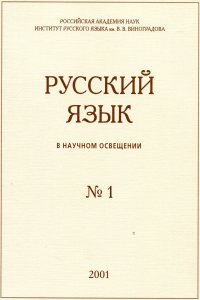The semantics of opposites: The Right vs. Left opposition in lexicography
Abstract:
This article is the first to examine in detail the lexicographic problems posed by adjectives
denoting ‘right’ and ‘left’. In European and Russian lexicography, it has been customary from
the very beginning to treat adjectives denoting ‘right’ and ‘left’ as a closed microsystem,
resulting in the practice of interpreting the basic spatial meaning of one word through the
other with the help of the meta-notion ‘opposite’. The article traces the formation of
approaches to the interpretation of spatial meanings of these adjectives and reveals the models
of “naive” spatial orientation, i.e. the choice of the coordinate system (human body parts or
cardinal directions) with which these meanings correspond. In addition, the article brings up
the necessity to correlate adjective polysemy, in particular their so-called evaluative uses,
with their primary spatial meaning. A return to the model where the spatial meanings ‘right’
and ‘left’ correlate with the right hand, proposed back in the 18th century, would allow to
create a consistent and symmetrical description of this lexicographic type.


